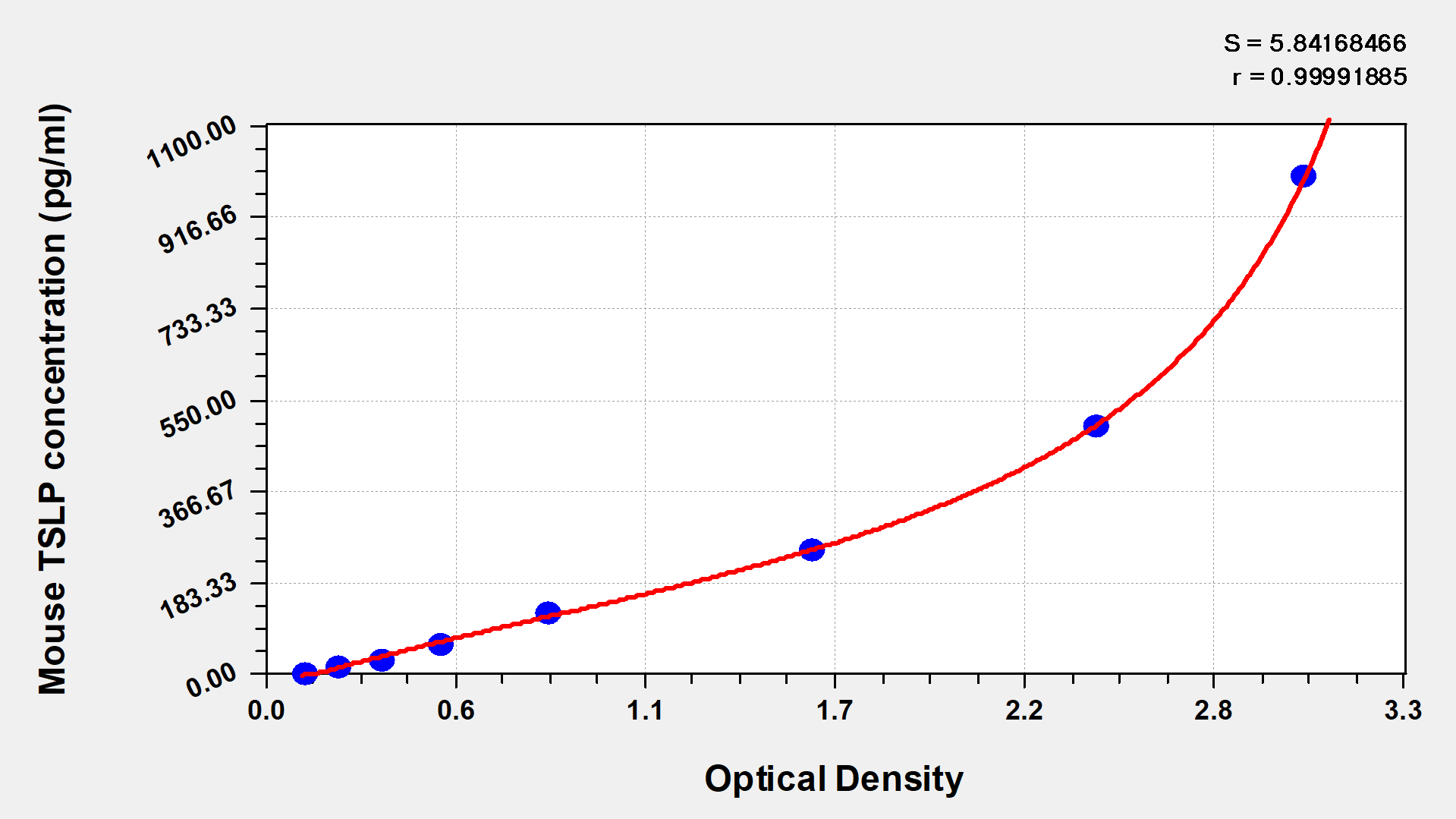CUSABIO's mouse TSLP ELISA kit is an in vitro enzyme-linked immunosorbent assay for the quantitative measurement of mouse TSLP in serum, plasma, or tissue homogenates. This assay uses the sandwich enzyme immunoassay technique in combination with the enzyme-substrate chromogenic reaction to quantify the analyte in the sample. The color develops positively to the amount of TSLP in samples. The color intensity is measured at 450 nm via a microplate reader.
TSLP is a pleiotropic cytokine expressed primarily by epithelial cells at barrier surfaces such as the skin, gut, and lung in response to danger signals. It acts on multiple cell lineages, including dendritic cells, T cells, B cells, neutrophils, mast cells, eosinophils, and innate lymphoid cells, affecting their maturation, survival, and recruitment. TSLP binds to its receptor (TSLP-R) to exert its biological activities. TSLP genetic variants and its dysregulated expression have been linked to atopic diseases such as atopic dermatitis, asthma, allergic rhinitis, and eosinophilic esophagitis but also to other immune-mediated diseases such as cancer and rheumatoid arthritis.






